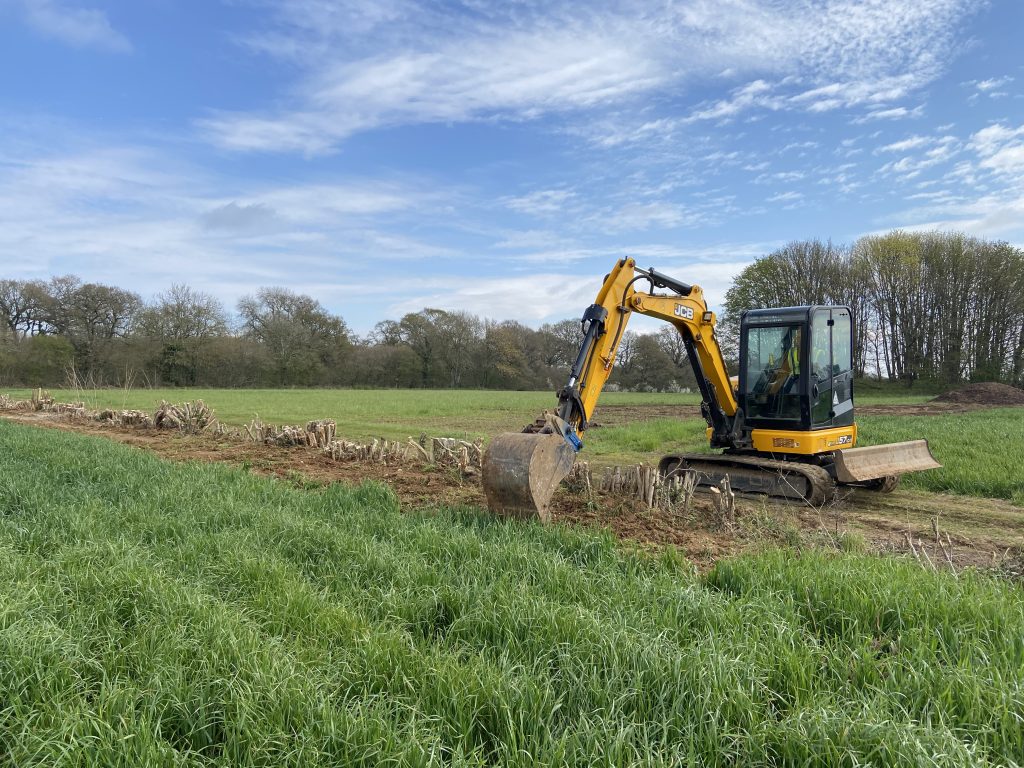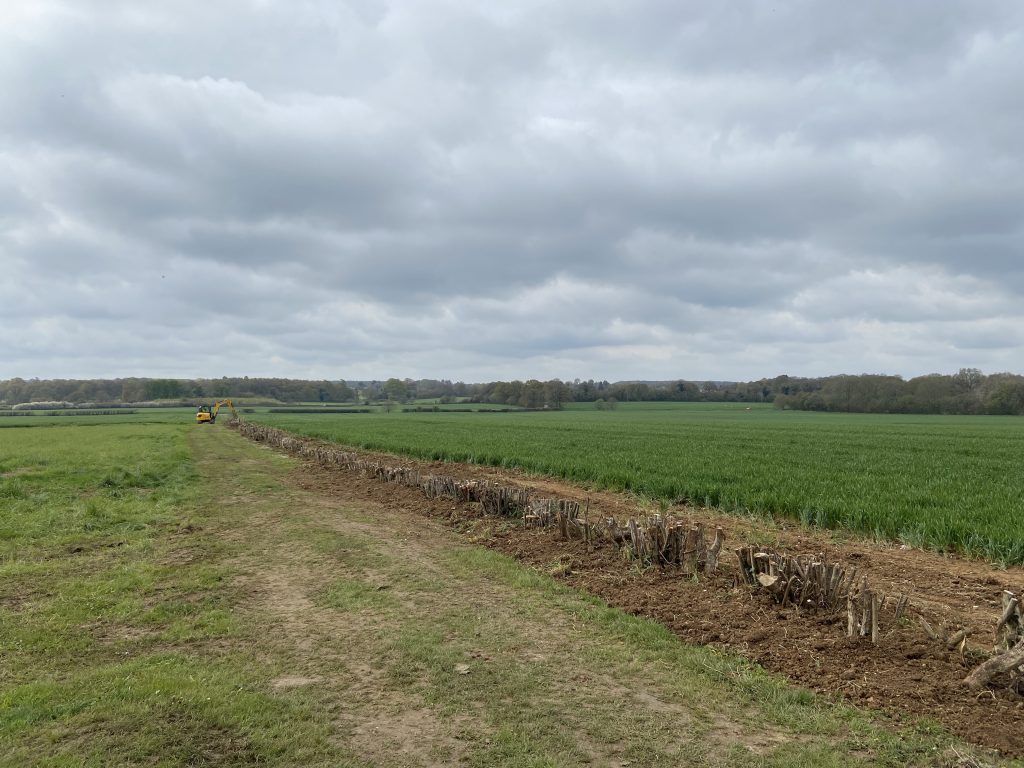The Manydown team have been focused on being ready and able to access the site safely and efficiently once we are in a position to start the infrastructure work on site.
Removing and, where viable, translocating (relocating) the existing vegetation within a timeframe that allowed for bird nesting season and any hibernating dormouse was the first step needed to construct the approved, permanent development access junctions on the Roman Road and Worting Road.
Where the hedgerow was of a high enough quality it has been planted elsewhere on the Manydown site, in total delivering over 80 meters of high-quality re-planted hedgerow which we hope will thrive in its new location.


The aim of hedgerow translocation is to conserve the valuable woody and herbaceous components in important hedges that cannot be readily recreated using new planting/seeding techniques. Movement of the shrubs, their root systems and associated soils containing the seed bank was undertaken in a careful programme of works and at an appropriate time of year and climatic conditions can safeguard this.
This work to improve habitat connectivity is one of the pillars of our sustainable approach for Manydown. Activity like this supports our longer-term goal to increase the extent of hedgerows and enhance wildlife corridors, by improving hedgerow connections, whilst facilitating the approved permanent access junctions to new homes at Manydown.
Another important step in the longer term delivery of Manydown was the recent approval of the temporary construction access junctions on Roman Road and Roman Way. These junctions will facilitate the construction routing strategy which is designed to minimise negative impacts of construction traffic on local communities by keeping the vehicles on the main routes into Basingstoke (M3 and A339) for as long as possible on their journey to site. This reduces the impact on minor local roads with vehicles entering the site as early as possible on their journey.

